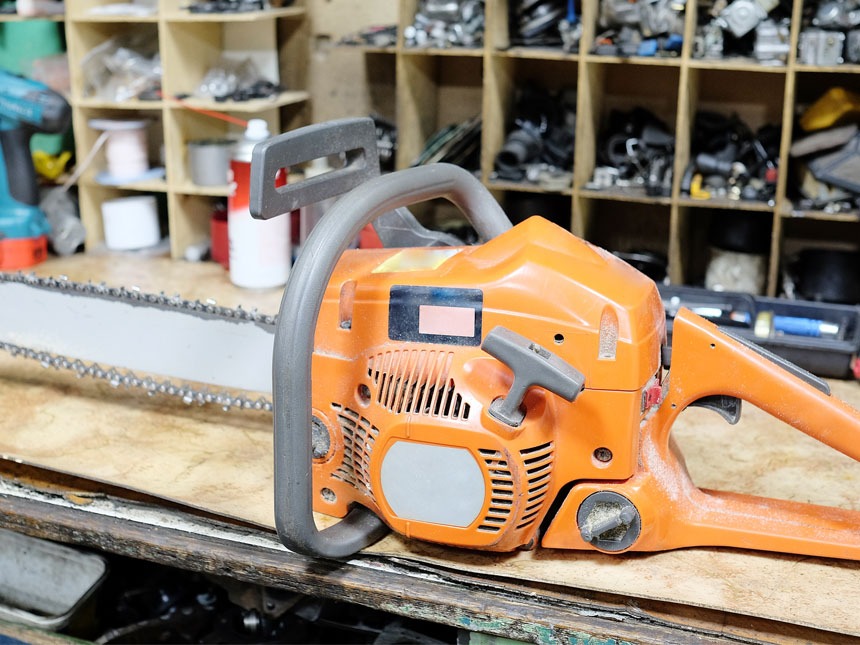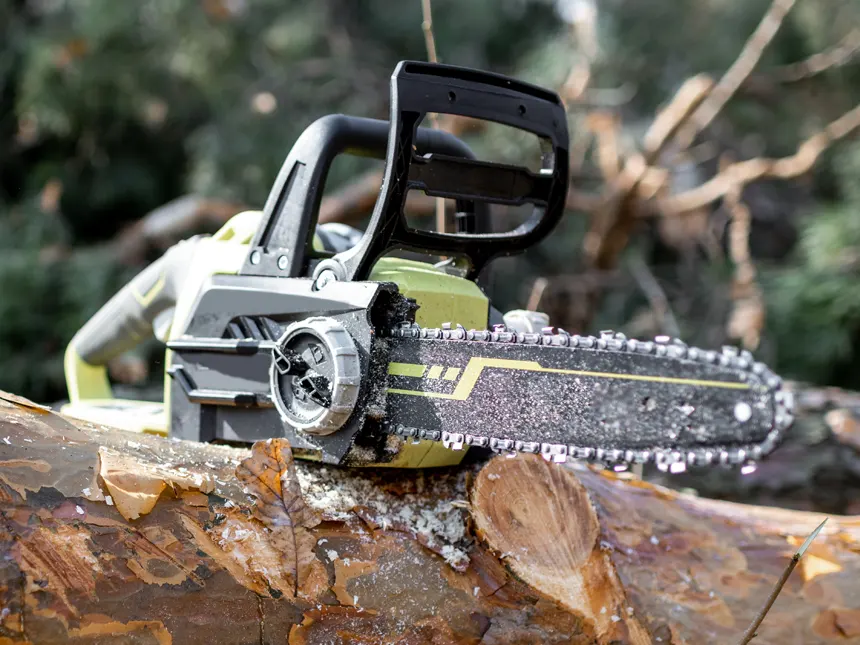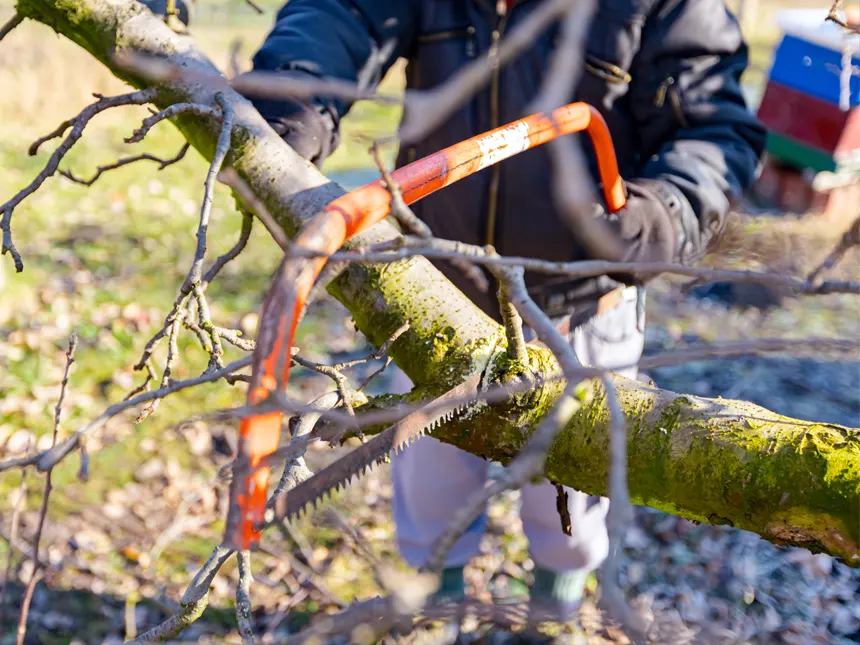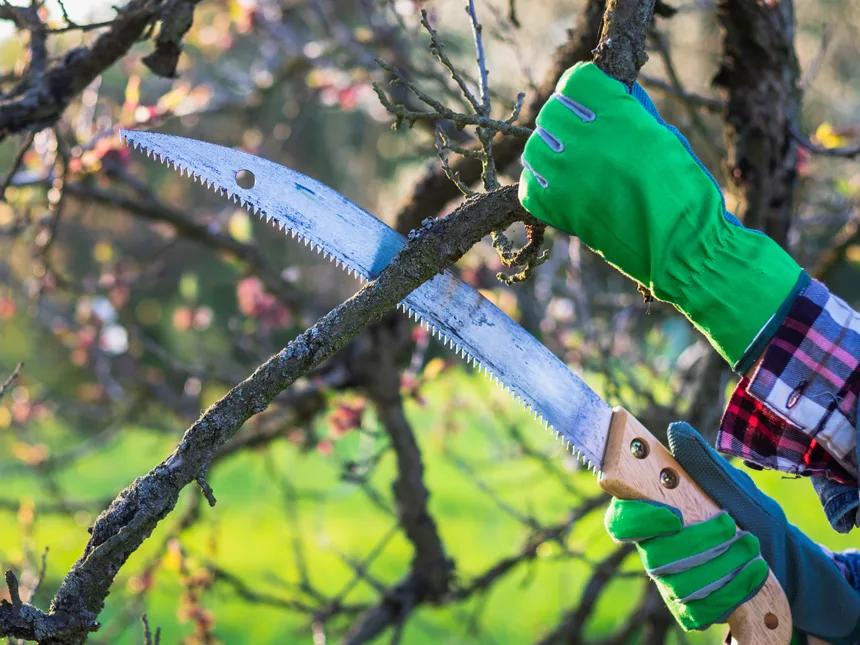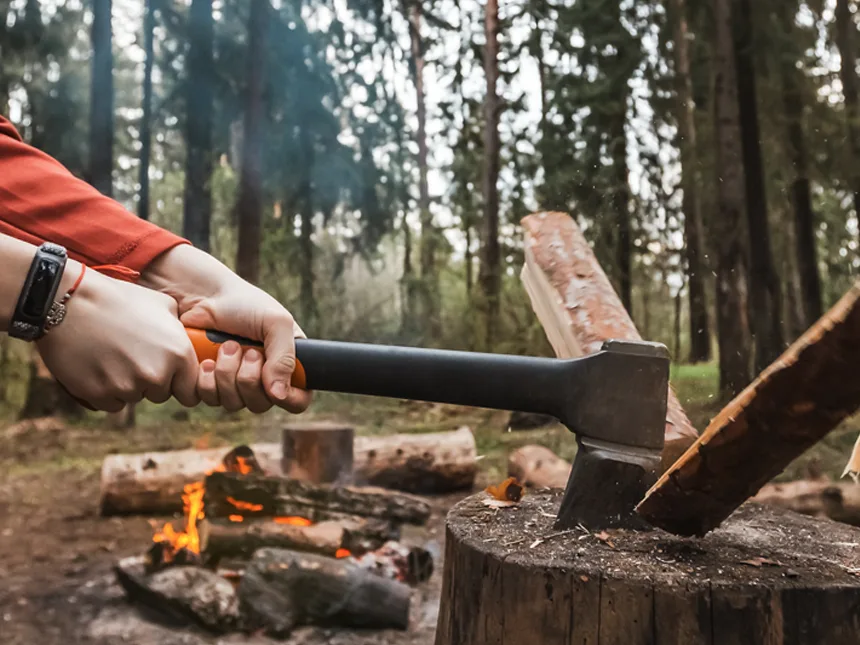Hickory Firewood: How Good Is It?
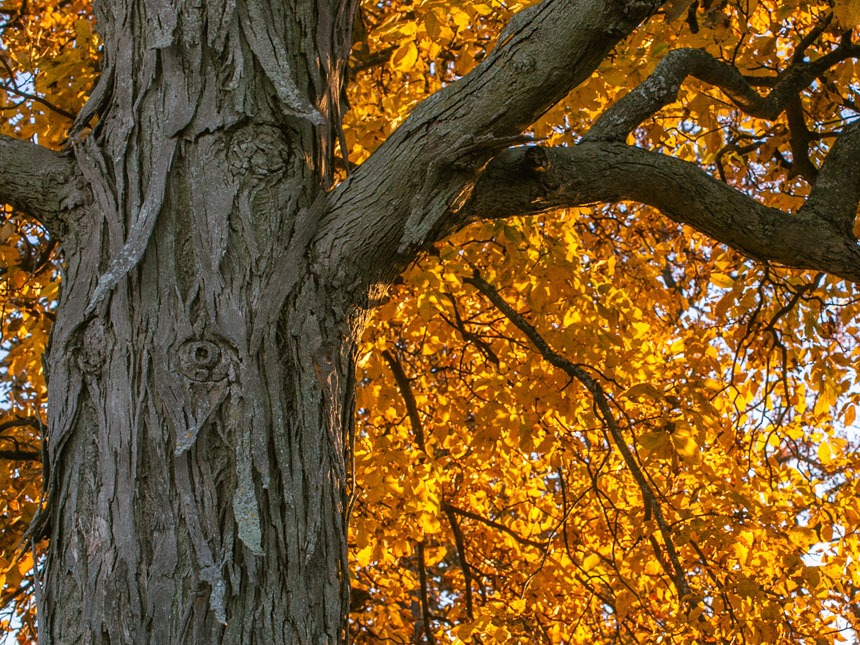
Timber Gadgets is reader-supported. We may earn a commission if you buy through the links on our site.
Hickory is excellent firewood. It closely competes with black locust firewood for its burning qualities, due to its dense hardwood that burns long and has high heat output.
It produces excellent quality coals. Because of this, you can rely on it for long cold nights. Its exceptional performance is that it smells very nice.
If you are to smoke meat and barbecues, hickory is an excellent choice. Its wood is used for smoking and adds a sweet, pungent flavor to the meat.
Knowingly, hickory is a wide group of trees and has around 18 species, of which, 12 are cultivated in the United States. This kind of hardwood is used to make handles for the tools because of its strong, flexible wood and great shock-absorbing properties.
Its heat production is even higher than oak. However, it is difficult to split and takes almost a year to lose enough moisture to be burned. Moreover, it gives low smoke and few sparks. One cord of hickory weighs heavier, even among the hardwood species. It has a low sap level especially as compared to softwood-like pine.
Also, hickory belongs to the walnut family and produces edible nuts. It has compound leaves and grows as a tall deciduous tree that likes to grow in low areas beside the river or wet places. As soon as it touches the ground, the wood is prone to decay. So, it should be seasoned at the earliest and consumed.
Table of Contents
Burn Qualities of Hickory Firewood
- BTU: 28.5 million BTUs per cord
- Weight: 4072 pounds per cord (dry)
- Splitting Difficulty: Difficult
- Seasoning Time: 12 months
- Smoke: Low
- Smell: Sweet pungent
Hickory has excellent burning qualities and offers a very pleasant experience. Heat output and longevity are the two most important factors in the firewood ranking. Hickory performs exceptionally well in both of these.
In my opinion, Its winning attribute is its bold, sweet smell which leaves your fireplace fragrant. Hickory produces excellent quality coals, too. These coals are very hot and burn for a very long time.
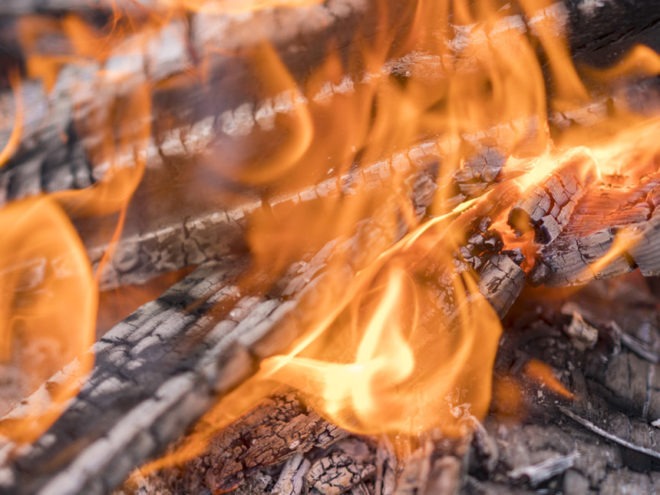
You can rely on its coals to warm you through the night and even a few embers will be saved to start a morning fire. A uniform bed of coals and minimal smoke are ideal for cooking purposes.
As is the norm with dense hardwood, it takes time to light up. So, it is recommended to use softwood for kindling purposes. Pine or cedar are ideal for kindling purposes. The bark of a few hickory varieties can also be used for kindling purposes.
Heat Output
Hickory burns very hot with a heat output of 28.5 million BTUs per cord. It almost approaches to black locust, which is considered the best firewood by many. Although we have eucalyptus and Osage orange which have even higher heat output, other attributes limit their usability as compared to hickory.
Always remember that seasoned firewood will release full heat. Wet firewood will drastically reduce the heat as more of it is consumed in evaporating moisture.
Smoke
Hickory produces very little smoke. Smoke quantity is usually a decisive factor in the selection of firewood. Softwoods tend to be smoky due to the presence of sap and resins. This makes such firewood inappropriate for indoor burning and also for open campfires.
Another common reason for high smoke can be higher moisture content in the firewood. If the wood isn’t seasoned properly, it doesn’t burn well and releases a lot of unburnt particles with the smoke. This leads to higher smoke quantity and reduces heat output.
Creosote
Creosote is an amber to black compound, which you can find inside the chimney clinging to its walls. Besides narrowing the chimney, it is flammable and a higher deposit can lead to a chimney fire or house fire, in extreme cases.
All types of firewood create creosote although the quantity varies. Hardwoods typically create low creosote. Hickory also produces very low creosote and is considered safe to burn indoors.
Always remember that burning unseasoned firewood will produce higher creosote. Chimneys should be cleaned seasonally for the winter to go smooth without any problem.
Spark
Sparks seem insignificant in burning firewood but they can lead to the house fire. Some firewoods spark excessively and throw embers far away from the fireplace. This has resulted in house fires. Any rug or combustible thing can catch fire.
Hickory produces minimal sparks, which is why it is regarded as one of the best woods for burning.
However, high moisture threatens here as well. Higher moisture can lead to more sparks. Water getting vaporized creates high pressure which may throw away embers. It is advised to use some screen in front of your stove.
Smell
Hickory has an excellent smell, there’s no match for it. It is so good that it is used to make liquid flavoring smoke, which is condensed hickory smoke. It has a sweet smell which adds a great flavor to the meat. Also, it gives a great combination of high heat for a long time and an excellent smell. You’ll definitely love it!
Coals
Usually, coal qualities run consistent with burning qualities. As hickory burns long and hot, so do its coals. There are firewood (mostly softwoods) that do not produce long-lasting coals. But, coals from hickory don’t fade soon and produce a lot of heat. These can be used to have a lovely warm winter night.
Sap
Hickory has low sap content. Lower sap results in lower smoke and creosote. Softwood like pine has such a high sap content that it clogs the equipment and spoils clothes. This also causes a higher amount of smoke and creosote.
Splitting Hickory Wood
Hickory is moderately difficult to split. With that, firewood should be split before seasoning. Splitting with an axe can be a sweating task but if you’re on it, pick up your tools and start right away. However, using a hydraulic log splitter is always preferred, though I realize this is a luxury not everyone has access to.
Related: The 7 Best Splitting Mauls
Comparing Hickory Firewood to Others
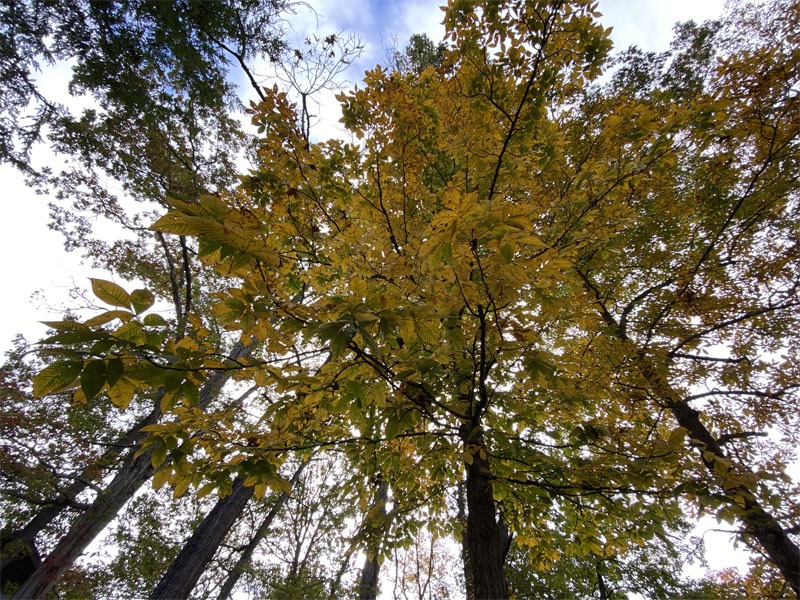
Hickory is premium of its kind and gives the best of firewoods. It has low sap compared to others and produces low smoke and creosote. Its wood and coals burn exceptionally long and hot whereas softer firewood like pine and cedar burn for a short time.
It is difficult to split, especially if you try with older and dry firewood; it can be a task. Also, it loses moisture slowly and takes around 12 months to season fully.
In general, hardwoods are difficult to process but give better burn qualities. The most important quality in which hickory leads all the firewood is its smell. It is a top choice by chefs all over the world to smoke meat and barbeque.
Below, you can find this table that compares the heat and dry weight of different firewood commonly used. You would notice that for denser firewood, heat output is higher. This is justified because they pack more mass for the same volume of one cord. One cord is 8*4*4 cubic ft.
| Species | Weight (lbs./Cord) Dry | Heat per Cord (Million BTUs) |
|---|---|---|
| Black Locust | 4016 | 29.8 |
| Hickory | 4072 | 28.5 |
| Beech | 3760 | 27.5 |
| Walnut, Black | 3192 | 22.2 |
| Sweetgum | 2592 | 21.3 |
| Cherry | 2928 | 20.4 |
| Elm, American | 2872 | 20.0 |
| Boxelder | 2632 | 18.3 |
| Pine, Ponderosa | 2336 | 16.2 |
| Pine, White | 2250 | 15.9 |
| Red Cedar, Eastern | 2060 | 13.0 |
How Long to Season Hickory Firewood?
Hickory doesn’t lose moisture fast and takes a minimum of 12 months to get seasoned fully. While some firewood seasons in as little as 6 to 8 months, this isn’t too bad.
Still, seasoning is an important step that you have to use any required time to lower the moisture levels below 20 percent. 13 to 17 percent is the ideal moisture range for a smooth burn. If MC is below 12 percent, firewood will burn too fast. A moisture meter can be used to determine the moisture level of the wood.
The time required for seasoning may vary according to external conditions. In hot and dry conditions, it takes less time to dry as compared to humid conditions.
If you can’t wait this long to air dry, you can dry your firewood in a kiln. Kiln drying is thorough and saves time. At the same time, if there’s high moisture in your area and you fear that firewood may rot, kiln drying comes in handy.
Identifying Hickory Trees
Hickory is usually identified from its distinctive bark which also varies among the different species. Hickory is a deciduous tree belonging to the walnut family Juglandaceae and genus Carya.
It produces dense foliage and grows to a height from 60 to 80 ft. Its wood is dense and well known for lumber due to its strength. It has slow growth but produces very dense wood.
Handles for tools are made from hickory wood due to its density and shock-absorbing properties. Most premium axes, hatchets, and tools with wooden handles use American Hickory.
Hickory has 18 varieties, of which 12 are native to North America. Hickory is generally present all over the Eastern and Midwestern areas of the United States. It usually grows in moist soil, along streams, rivers, and in bottomlands.
The most commonly found hickory varieties are Shellbark hickory and Shagbark hickory, named for their bark habits.
Leaves
Hickory leaves are pinnately compound and have five to nine leaflets per leaf. These leaves have serrated margins and lanceolate shapes. In the fall, leaves change color to yellow, golden yellow, or golden brown.
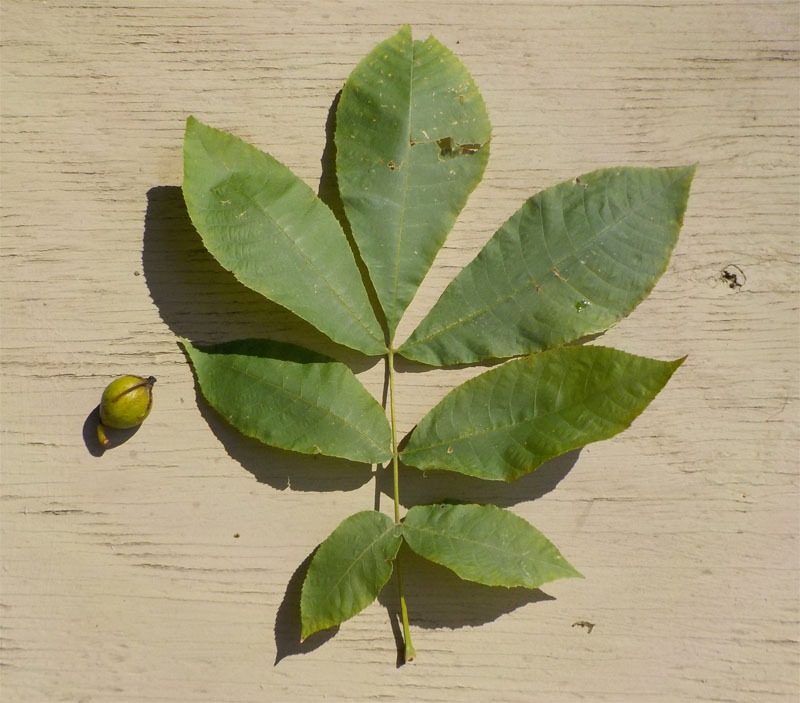
Bark
The bark is the main identification mark of different varieties. Here we shall discuss a few hickory varieties with a special focus on their distinct bark patterns.
- Shellbark Hickory (Carya laciniosa) – The bark of young shellbark trees is gray and smooth which develops shallow, thin fissures. Its plates have slight curvature at the ends, which are easy to peel off. Compared to shagbark, shellbark has a smooth feel. It is also called ‘kingnut hickory’ for its big sweet nuts.
- Shagbark Hickory (Carya ovata) – It has two varieties named Southern and Northern shagbark hickory. Young trees have smooth bark which gets thick and starts to curl away from the trunk. It forms long narrow plates that give a shaggy appearance to the trunk. This character makes it much easier to identify this particular variety from shellbark hickory. This curling makes hickory a highly ornamental tree.
- Pignut Hickory (Carya glabra) – Young Pignut Hickory trees have smooth, gray bark which develops scaly ridges and deep grooves as the tree matures. Its bark does not peel off as does with other varieties. It bears pear-shaped nuts which have a bitter taste and are unpopular among people. Hogs and other animals like to consume its nuts for which it is named ‘pignut hickory’.
Featured photo by bmargaret / Adobe Stock

